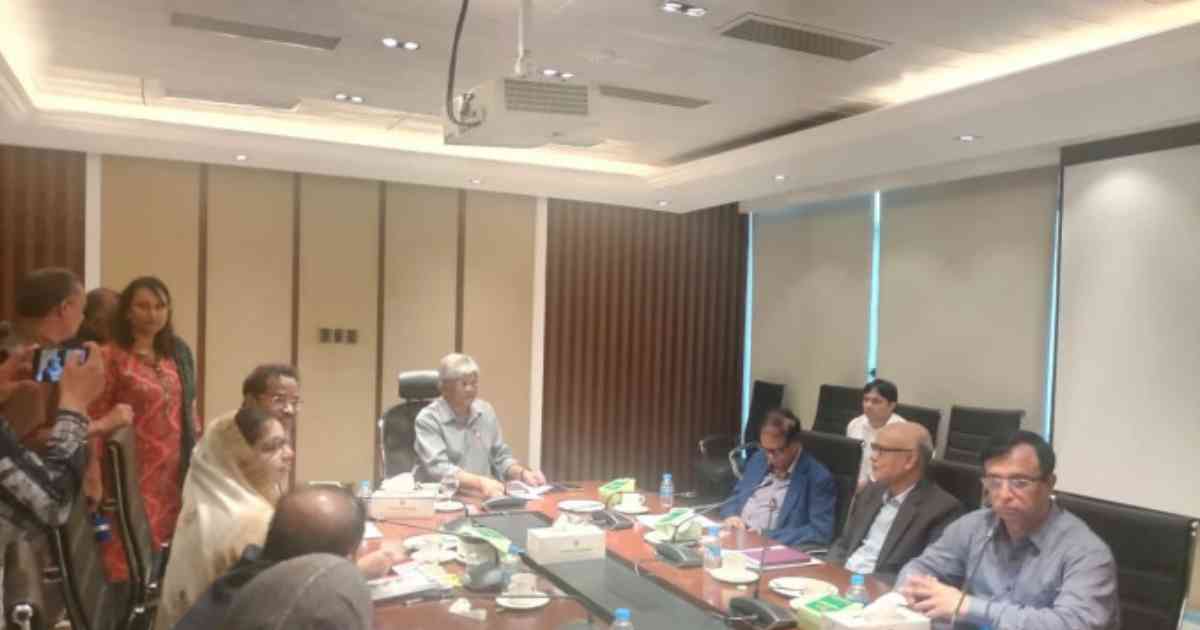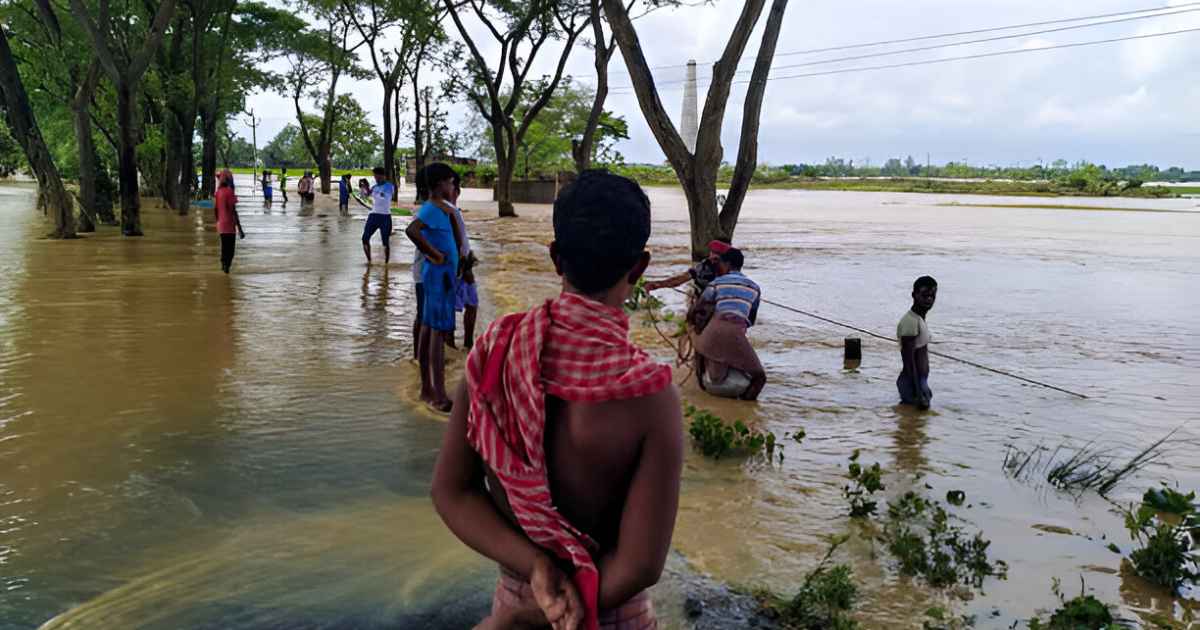Agri Biz
Farmers inspired by single success in Barguna

Former expat Habibur Rahman Matubbar, a resident of Kewabunya village under Amtali Upazila in Barguna, has been enjoying great success in cultivating malta on his 15 bighas of land for the past seven years or so.
Matubbar, who lived in Saudi Arabia for almost 20 years, pondered how he could make an income after returning to Bangladesh in 2015 and this led him to the success story of another malta farmer that was posted on YouTube.
Inspired to try his hand at growing the fruit, Matubbar developed 15 bighas of land near his house with the assistance of CM Rezaul Karim, the Upazila agriculture officer.
Having planted a total of 5,000 saplings, the orchard produced Tk 1 lakh worth of malta within a year.
Matubbar says his garden, where he grows other crops as well, earned him at least Tk 12 lakh over the past four years.
Apart from malta, which is a type of orange, he also grows mangoes, lemons, bananas, papayas and litchi to earn roughly Tk 3-4 lakh each year.
In addition, there are two ponds that have a radius of three bighas each that Matubbar uses to cultivate various types of fish, which earn him another Tk 3-4 lakh annually.
However, he insists that malta remains his biggest earner with yields increasing every year.
Matubbar is now well renowned for his success as a self-sufficient farmer with neighbors and locals from near and far coming to consult him for agricultural work.
Many people are even trying to imitate his success by growing various fruit, including malta, papaya, guava and banana in their backyards to meet their own food needs and earn an extra income.
“In just five years since my time abroad, I have become a successful malta farmer who earns lakhs of taka each year,” Matubbar said.
“Besides, I am now the ideal farmer as I cultivate different varieties of fruits and fish as well. I am proud of this work,” he added.
The former expat went on to say that his malta usually sells for between Tk 200 and Tk 250 per kilogram.
Harun Or Rashid, a neighbor of Matubbar, said many people in the area are now cultivating malta and other fruits.
Upazila Agricultural Officer Karim and other agriculture officials often visit Matubbar’s farm, which has helped bring a source of nourishment to people in the region.
Due to his success, many farmers from Kewabunya village and its surrounding areas are cultivating different varieties of fruits in what were once paddy fields.
Md Badrul Alam, additional deputy director of the Department of Agricultural Extension (DAE) in Barguna, said malta is a profitable agricultural product.
“Due to its good demand and price across the country, farmers are increasingly turning to malta cultivation. In Barguna, 20 hectares of land has been cultivated this year and the acreage grows annually,” he added.
Malta production across the country doubled between fiscal 2018-19 and fiscal 2020-21. Farmers bagged 7,000 tonnes of the fruit in fiscal 2020-21, up from 3,000 tonnes the previous year. The total acreage under malta cultivation grew more than four times to 13,000 acres at the same time, according to the Bangladesh Bureau of Statistics.

Agri Biz
Adviser Dr. Salehuddin Ahmed: Govt Committed to Controlling Commodity Prices

Adviser to the Ministries of Finance and Commerce, Dr. Salehuddin Ahmed, emphasized today that the prices of commodities are closely linked to production and supply, and assured that the government is fully aware of the necessary steps to control these prices.
“We are very conscious of issues related to trade and commerce. My colleague, Dr. Wahiduddin Mahmud, who oversees the Ministry of Planning, is also focused on these matters. We are accustomed to handling such challenges,” Dr. Salehuddin remarked in response to reporters’ questions at the Ministry of Finance in Bangladesh Secretariat.
Earlier in the day, Dr. Salehuddin met with Edimon Ginting, the Country Director of the Asian Development Bank (ADB), at his office in the Economic Relations Division (ERD).
He noted that the government is also attentive to the impacts of imported inflation, stressing that only essential goods should be imported. “We must ensure that the additional burden on the general population is minimized and work to further reduce existing pressures,” he added.
Dr. Salehuddin also mentioned that the central bank governor is well-informed about the causes of rising inflation, which is why strict market monitoring is in place.
Addressing another question, he mentioned that the Bangladesh Bank Governor is actively managing the issue of increasing foreign currency reserves, and this topic will be raised in the upcoming annual meetings of the World Bank and the IMF.
When asked about the outcomes of his meeting with the ADB, Dr. Salehuddin expressed that development partners, particularly the World Bank and ADB, remain positive about continuing their operations in Bangladesh. He noted that the ADB and other partners have assured him of their ongoing cooperation in the development sector.
He further highlighted that the development partners are eager to advance pipeline projects in alignment with the government’s priorities.
Regarding the possibility of delaying Bangladesh’s graduation from Least Developed Country (LDC) status beyond 2026, Dr. Salehuddin acknowledged the complexity of the issue, noting that it involves various conditions and the involvement of multiple agencies, including the Ministry of Finance, Ministry of Commerce, and the National Board of Revenue (NBR). He assured that the government is closely monitoring the developments.
When asked about the demands from government employees for ration provisions, Dr. Salehuddin stated that both public and private sector employees are equally important, emphasizing the government’s priority to ensure that everyone can lead a decent life. “We are committed to ensuring that everyone benefits equally,” he said.
On his new responsibilities with the Ministry of Commerce, Dr. Salehuddin underscored the importance of local and international trade as key pillars of the economy. He assured that the government would strive to create a business-friendly and corruption-free environment in all business operations.
Recognizing the significant role of trade, commerce, and the supply chain in curbing inflation, Dr. Salehuddin promised prompt government action to address these issues.
He also mentioned plans to meet with the Ministry of Commerce and its subordinate bodies to tackle pressing matters. “You can be assured that I will do my utmost and take necessary steps swiftly,” he concluded.
Agri Biz
Prices of daily essentials to come down gradually: Finance adviser

The prices of daily essentials will come down gradually, Finance and Planning Adviser Dr Salehuddin Ahmed said today (14 August).
“Common people will get relief to some extent. But it can’t be said that the prices will decrease overnight,” he told reporters at the conference room of the Finance Ministry.
Responding to a question about syndicate in the market, he said, “There is nothing that has not come to our notice, I have some ideas, the governor also knows about it.
“The secretaries here are also very experienced and I told them that you will tell me everything without fear.”
Asked if any step will be taken regarding corruption, he said, “There was no discussion on the issue today.”
Responding to another question he said, “Action against corruption is an ongoing process, some processes need to be followed to punish someone. Some measures and action have already been taken.”
Responding to a question about the specific instructions given today, the finance adviser said the Industries and Agriculture ministries will do whatever needs to be done in the field of production, such as fertiliser supply and market management.
Agri Biz
Remal Ravages Crops in Khulna Agricultural Zone, Losses Estimated at Tk 180.24cr

Cyclone Remal has inflicted severe damage on crops across 45,590 hectares of land in the Khulna agricultural zone, causing losses worth Tk 180.24 crore, as reported by the Directorate of Agricultural Extension (DAE) in Khulna.
According to Mohon Kumar Ghosh, Additional Director of the DAE Khulna Zone, 44,148.95 hectares of farmland suffered partial damage, while 1,450.90 hectares were completely destroyed in the four affected districts: Khulna, Bagerhat, Satkhira, and Narail.
In Khulna district, Cyclone Remal affected 3,565.65 hectares of cropland belonging to 13,796 farmers, resulting in losses estimated at Tk 42.98 crore. Bagerhat district witnessed damage to 12,611.50 hectares of cropland from 39,465 farmers, with losses amounting to Tk 97.36 crore. In Satkhira, 659.7 hectares of cropland owned by 12,156 farmers were affected, incurring losses of Tk 24.42 crore. Narail saw damage to 28,763 hectares of cropland from 8,620 farmers, with estimated losses of Tk 15.47 crore.
Speaking to BSS, Mohon Kumar Ghosh highlighted the extensive damage caused by Cyclone Remal to the southern coastal areas, particularly croplands. The affected crops include jute, Aush seedbed, aush cultivated land, groundnut, chili, bona Aman, ginger, turmeric, summer melon, litchi, mango, papaya, betel nut, sugarcane, banana, winter maize, sesame, and various Kharif season vegetables such as tomato, mung bean, and banana.
Following directives from Prime Minister Sheikh Hasina, efforts are being made to support the affected farmers. “We are working tirelessly to help the helpless farmers recover their losses,” Ghosh said, adding that the government is providing incentives and regular counseling and supervision at the field level to aid recovery.
In the coming months, the affected farmers will continue to receive various forms of government support to mitigate the impact of Cyclone Remal.


You must be logged in to post a comment Login